In the 1980s, as the young died and doctors scrambled for answers, charities, activists, and governments tried to inform the public about a new killer: AIDS.

These posters, collected by the Wellcome Trust, reveal the various messages displayed around the world, amid widespread fear, ignorance, and misinformation about the epidemic.
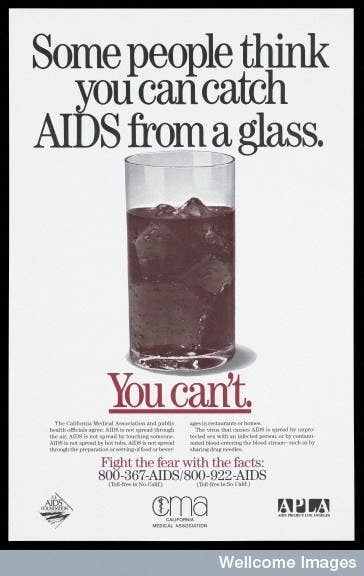
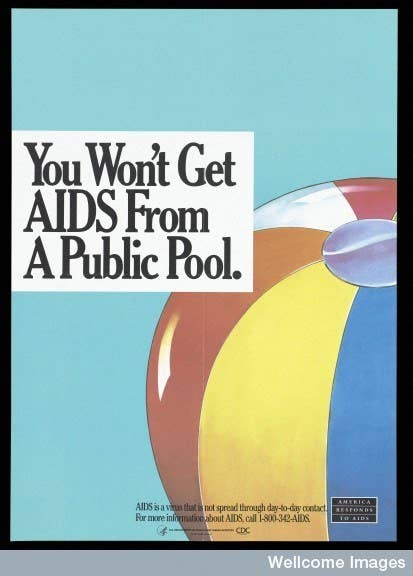
Some simply tried to tell people that AIDS is deadly.
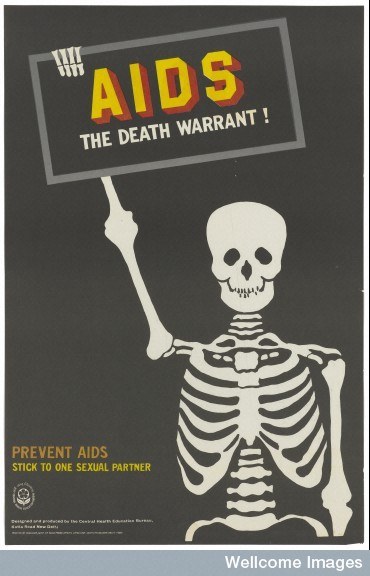
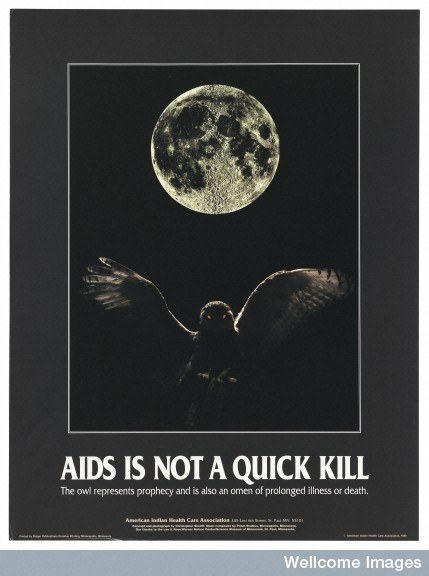
Many carried a single message: Use a condom.
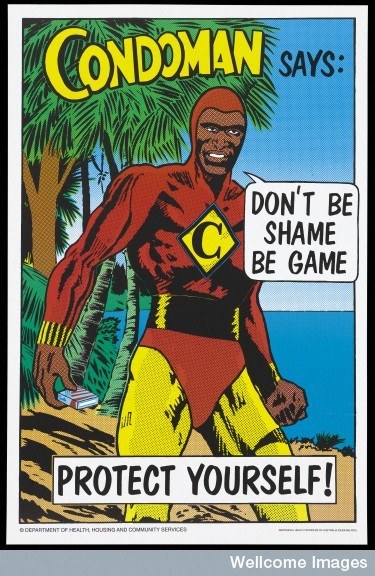
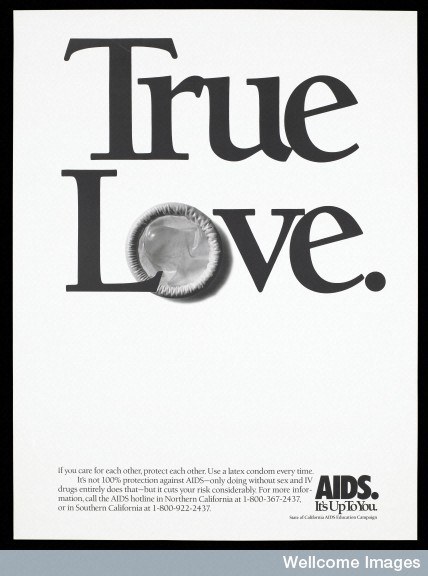
The "put a rubber on it" message began in 1980s posters and continued throughout the 1990s. Many still bear the message today.

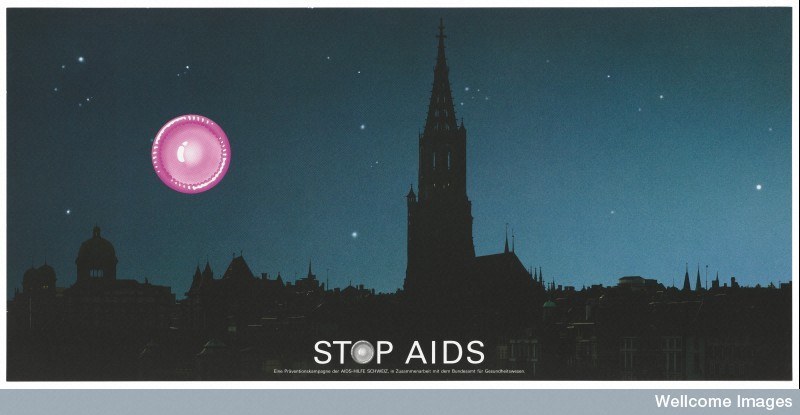
"Be good in bed! Use a condom."
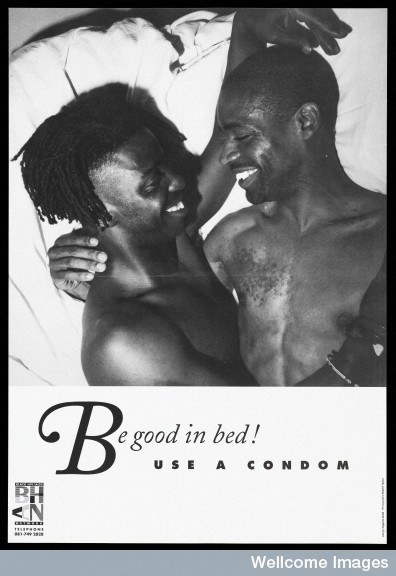
Posters attempted to convey the condom message to all races, genders, and sexual orientations.
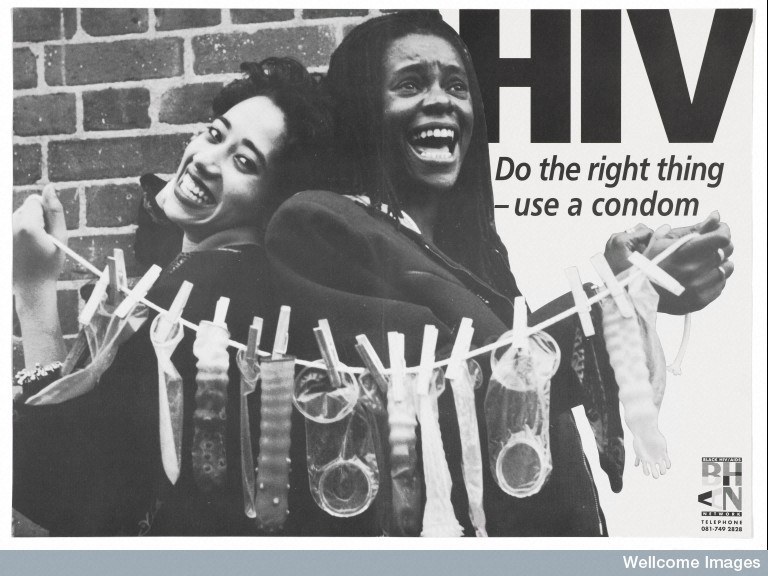
Not only were condoms becoming increasingly more available, they were the single most effective protection against the HIV virus. Today, Truvada (aka PrEP), the drug that prevents HIV, is also as effective, for the minority who have access to it.
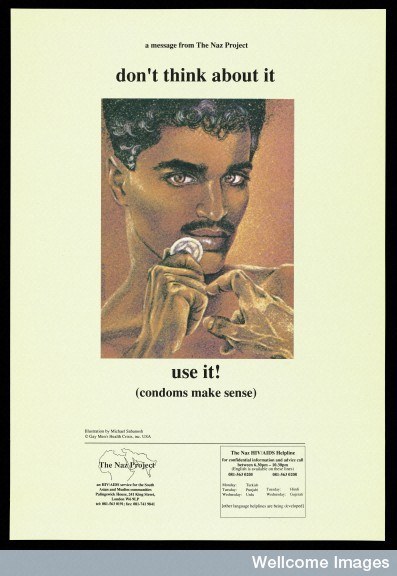
As the epidemic grew, charities tried to find new, sexy, and sometimes explicit ways to encourage safer sex.
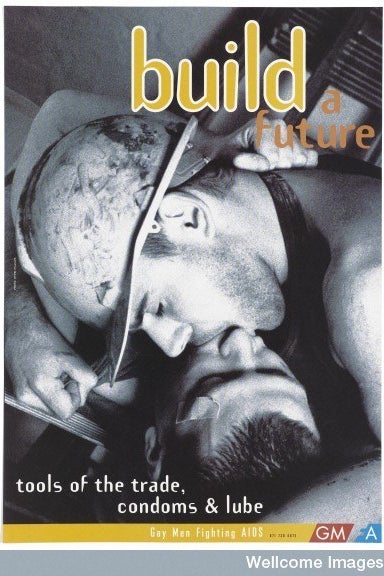
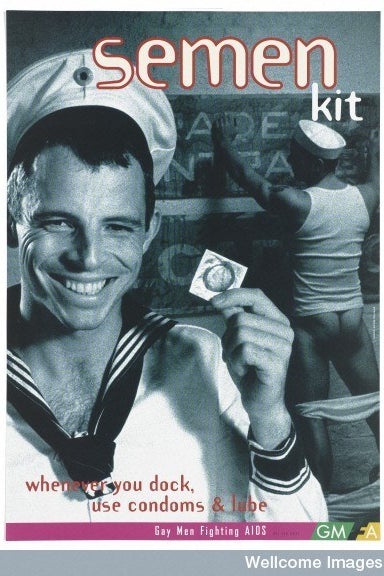
1990s posters by Gay Men Fighting AIDS (now called GMFA).
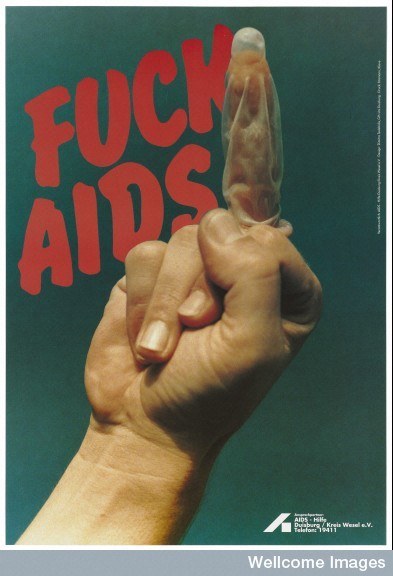
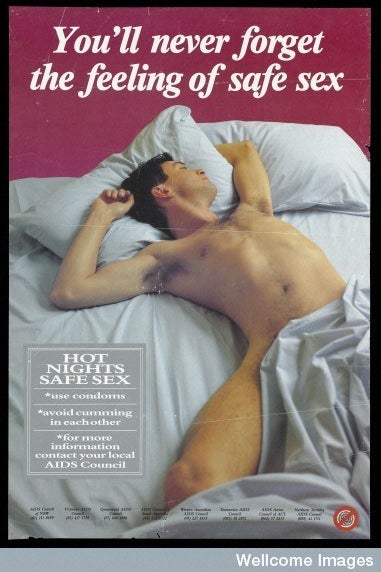
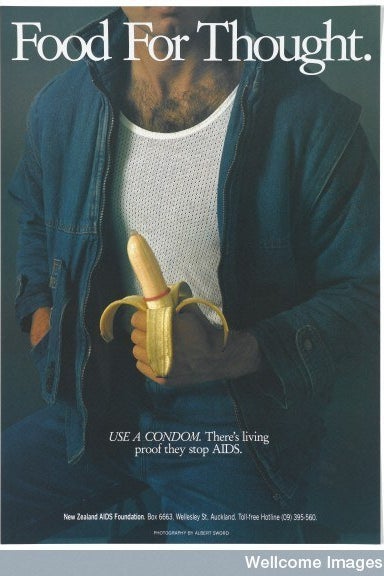
Ad for safe sex by the Australian AIDS Council with a list of regional council telephone numbers, 1994. And a banana design by the New Zealand Aids Foundation, 1990s.
This included promoting the female condom (aka femidom). It wasn't very popular.
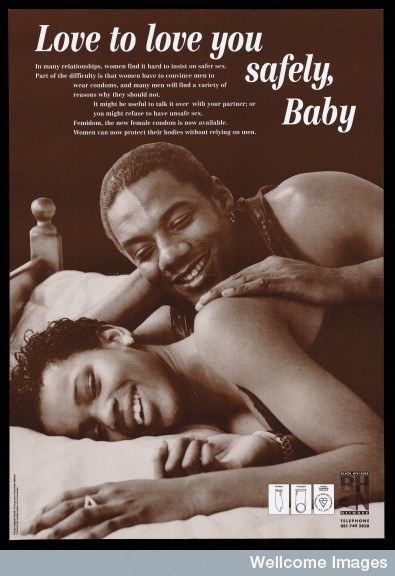
Other posters took note of the dangers of sharing needles.
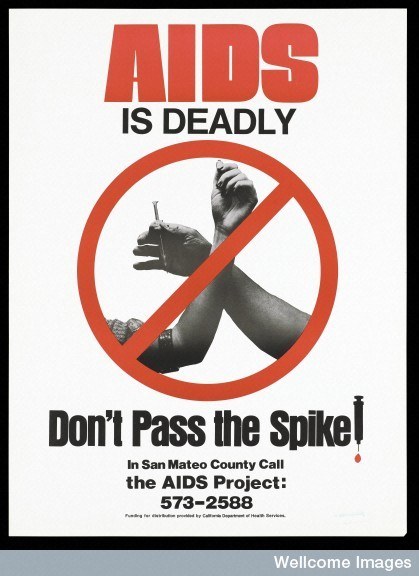
And some even promoted the benefit of bleaching needles. (It's safer to use fresh ones, however.)
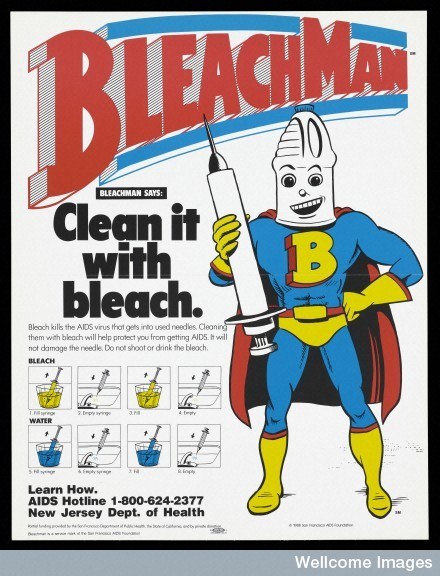
This poster warned of the dangers of blood transfusions, through which many people contracted HIV until the mid-1980s when screening began for all blood samples in most Western countries.
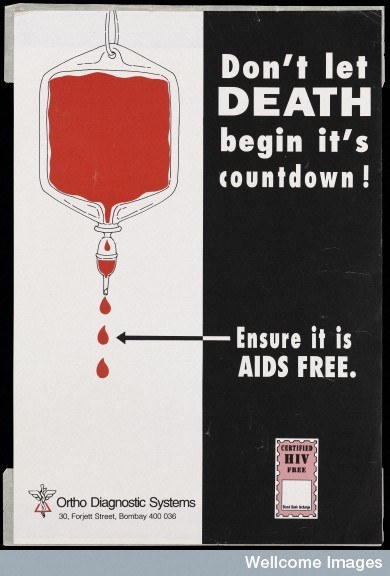
But alongside the more obviously practical messages came attempts to remind people that the virus can affect anyone.
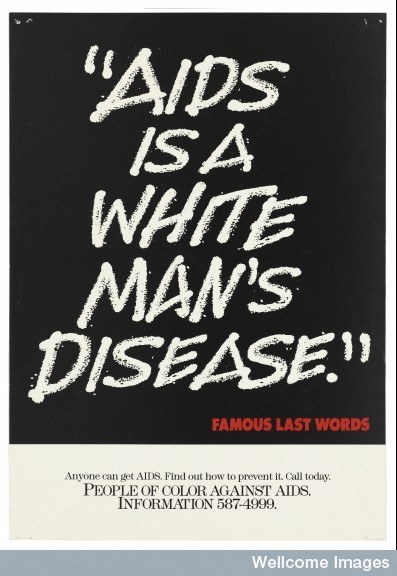
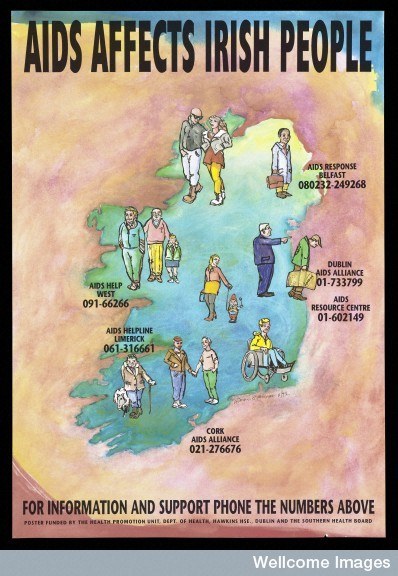

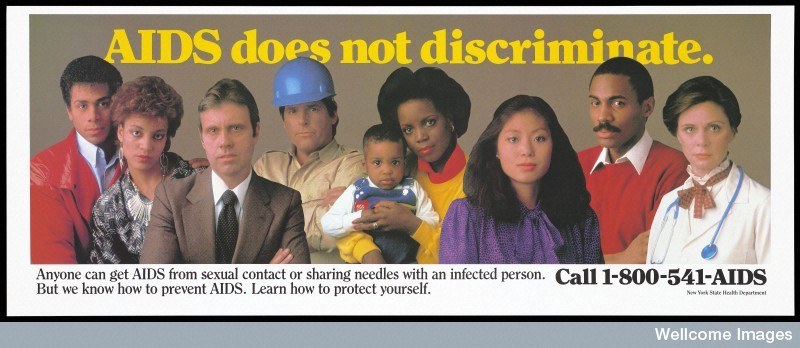
This poster, aimed at students, highlights many false assumptions about who isn't at risk. "I can't get AIDS. I only sleep with nice women."
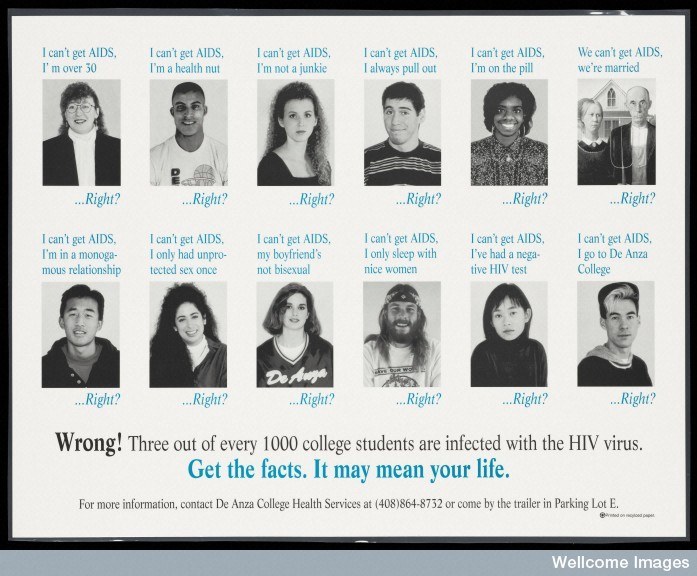
Some posters tried to tackle HIV-prevention messages for both sex and drug use.
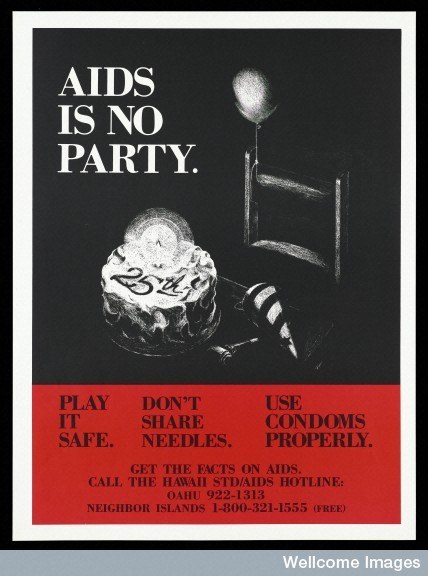
Others, like this Dutch design, promoted the idea that even when protecting yourself you can still have fun: "Live wild. Be safe."
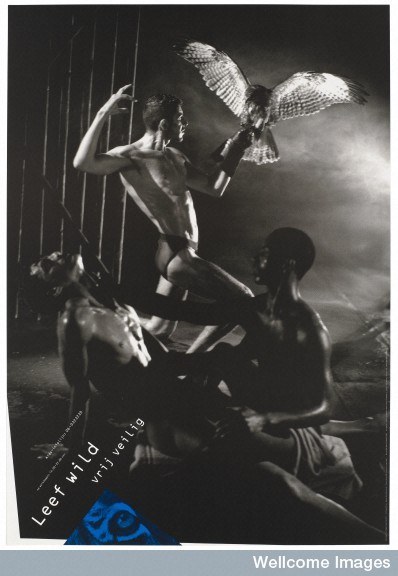
And this campaign aimed to encourage the use – and washing – of sex toys, as a fun, safer way of enjoying sex, without penile penetration. Doctors now know that sharing sex toys can spread hepatitis C.
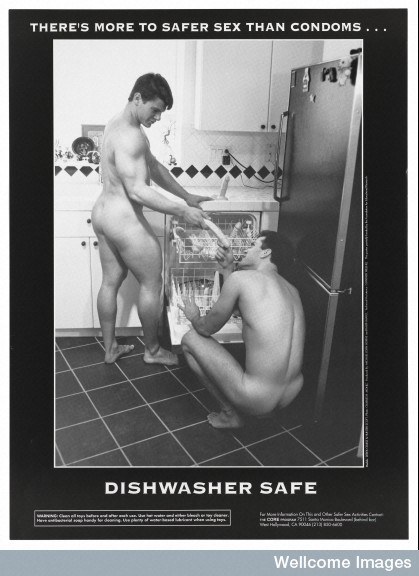
If sex toys weren't your thing, another option was suggested: masturbation. Ideally with someone else.
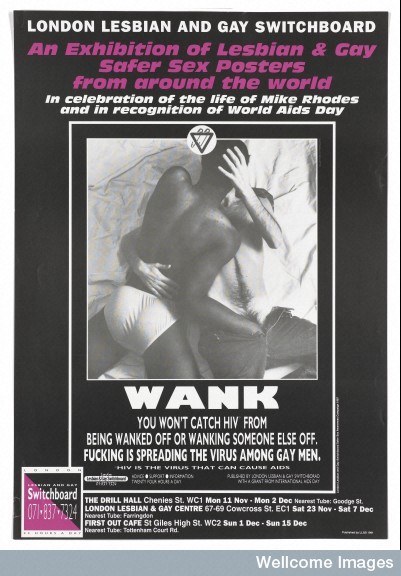
But by the early 1990s, the death rate continued to rise, and so this 1987 image – perhaps the most famous internationally – was still in common use. It wasn't only found on posters, but also on stickers, banners, and T-shirts.

With the deaths came terror, stigmatisation, and violence against people living with HIV/AIDS. This campaign highlighted gender-based violence: "She told her husband she was HIV+. He took it badly."
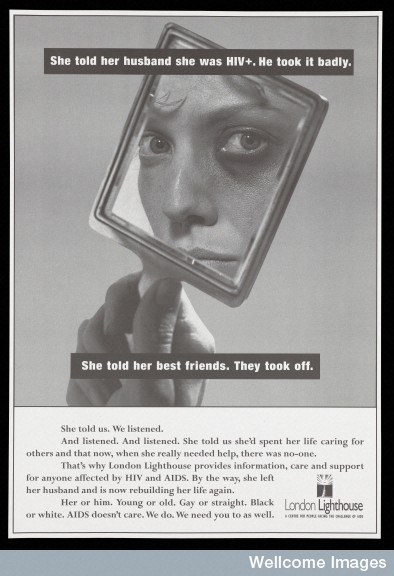
There were many attempts to target women through poster campaigns, like this one, pinpointing the need for condom use not only to guard against unwanted pregnancy.
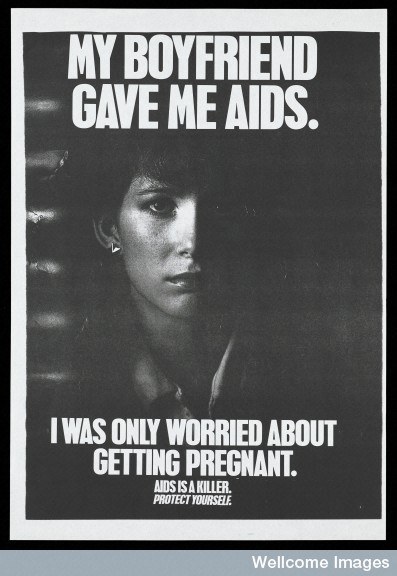
Some organisations seemed to encourage women to be abstinent: "A great love is worth the wait."

Others sought to remind people that you cannot tell by looking at a woman what her HIV status is.
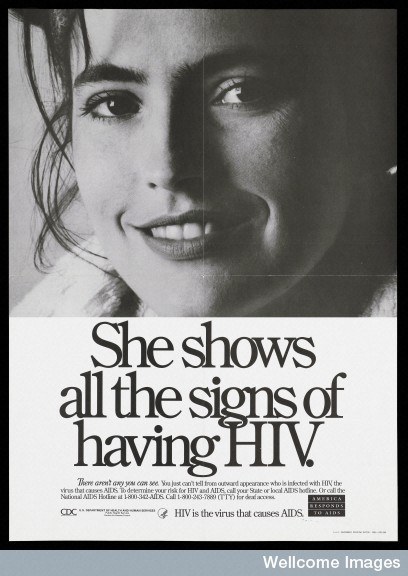
Some used children to catch the attention of parents – or potential parents. "Who will take care of him? You can't afford to be sick."
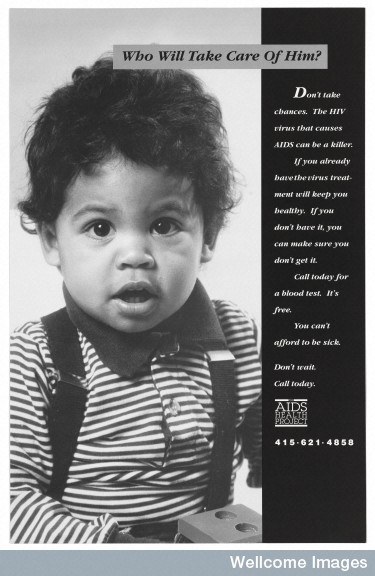
There were posters aimed at sex workers. "Don't have sex without a rubber for anything."
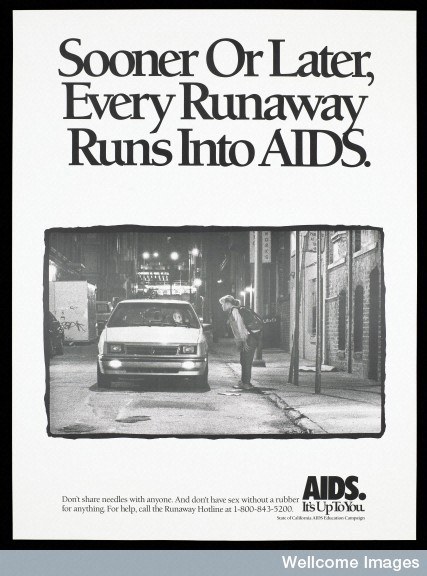
HIV/AIDS charities were in desperate need of funds, so many used adverts and posters to gain donations. This one from Germany featured a photo of man with lesions, a common symptom for people with AIDS-related skin cancers.

Other organisations like ACT-UP used posters to galvanise activists into calling for better healthcare and drugs for HIV-positive people. It wouldn't be until 1996, after millions had already died, that effective anti-retrovirals arrived.

Some groups simply advertised their services.
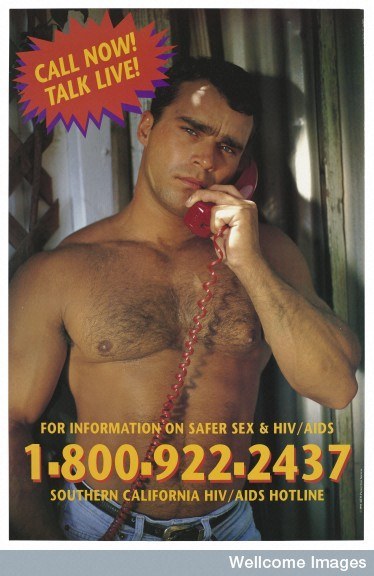
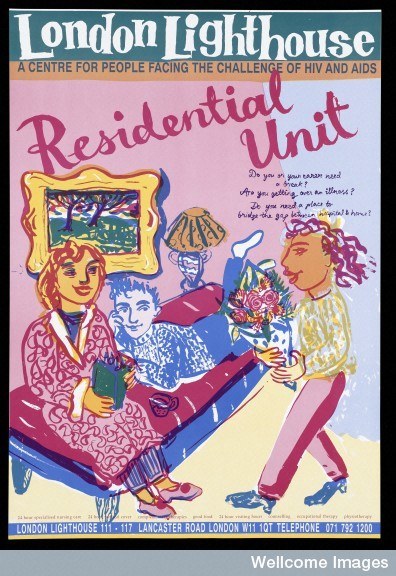
A crucial message in many of the posters was to encourage everyone to support, not judge, people with HIV/AIDS

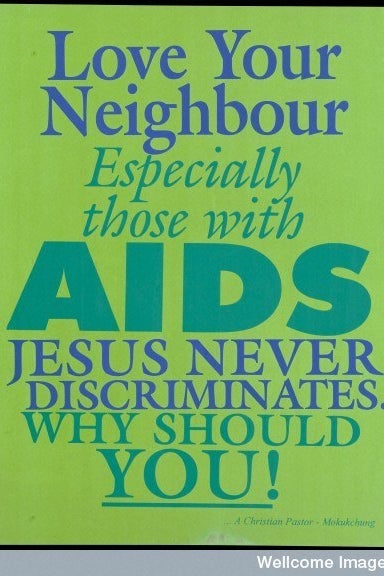
Advertisement by the New Zealand AIDS Foundation. 1990s.
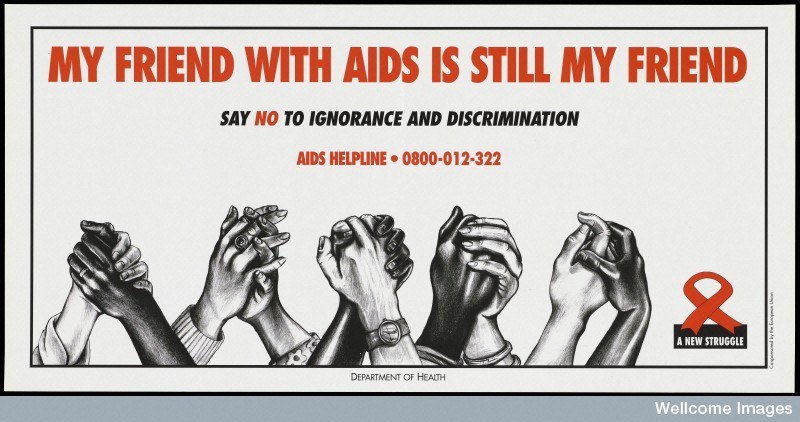
Some countries, such as Kenya, incorporated the need to take care of HIV-positive people – and oneself – by emphasising the importance of family.
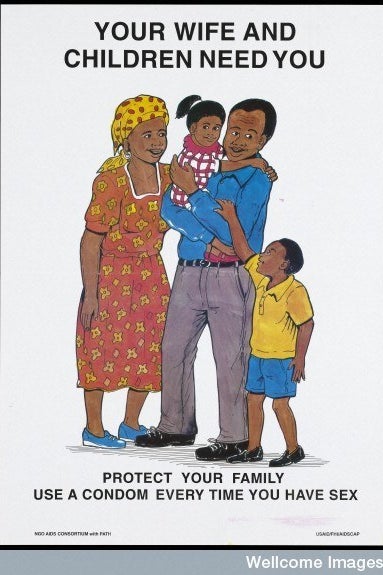
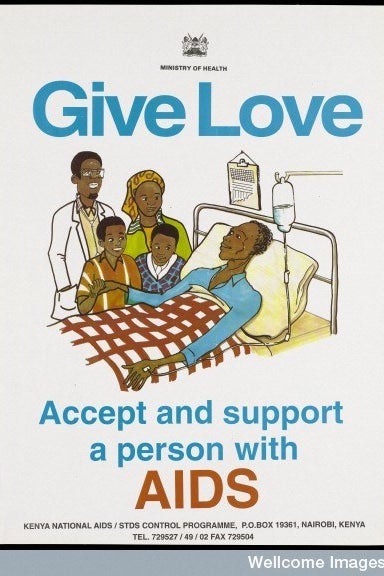
AIDS prevention advertisement by the NGO AIDS Consortium with PATH in Kenya. 1997.
And on World Aids Day — 1 December 2015 — with 35 million dead, and 34 million still living with the virus, this poster, once aimed at individuals, could now be aimed at governments who fail to respond to the crisis.

